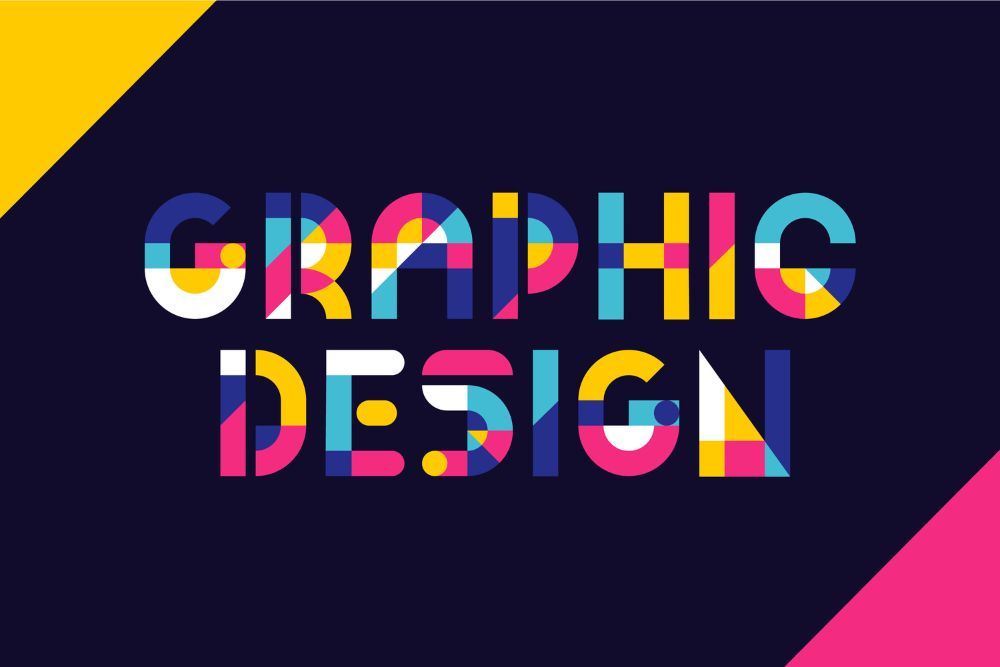In graphic design, color plays a major role in capturing attention, producing emotions, and conveying messages. Color theory is the foundation upon which designers construct their visual narrative, transforming ordinary designs into stunning creations. Understanding the concepts of color theory becomes essential for producing attractive and effective designs when you’re working on a logo, website, or marketing strategy.
As a graphic designer, you can use the language of color, opening up a world of possibilities. Mastering color theory allows you to improve your designs, communicate successfully with your audience, and create a lasting impression. In this blog post, we will go over the basics of color theory to understand how choosing the right colors can improve your graphic design skills.
Understanding the Basics of Color Theory
Color theory describes the study of hues, tints, shades, and tones, and how they interact. It provides a framework for understanding the relationships between colors, their psychological associations, and their ability to evoke specific emotions and perceptions.
To fully grasp color theory, you must first understand the three primary attributes of color:
- Hue: The pure, fundamental color without any added tint or shade (e.g., red, blue, yellow).
- Saturation: The intensity or purity of a color, ranging from vivid to dull or grayish.
- Value: The brightness or darkness of a color, ranging from pure white to pure black.
Using these attributes, you can create an infinite array of colors with their unique character and impact.
The Psychological Impact of Colors
Colors are not only aesthetic elements, they possess the power to influence our emotions, behaviors, and perceptions. Every color carries its symbolic meaning and psychological associations, which can be leveraged in graphic design to convey specific messages or produce desired responses.
For example:
- Red is often associated with passion, energy, and excitement, making it an ideal choice for bold and attention-grabbing designs.
- Blue evokes trust, stability, and calmness, making it suitable for corporate branding and financial institutions.
- Green is linked to nature, growth, and harmony, making it a popular choice for eco-friendly brands and wellness products.
By understanding the psychological impact of colors, you can strategically incorporate them into your designs to resonate with your target audience and effectively communicate your intended message.
Color Contrast and Its Importance in Design
Color contrast is another aspect of color theory that plays a vital role in effective graphic design. Contrast refers to the degree of difference between two or more colors, and it can greatly impact the legibility, emphasis, and overall visual appeal of your designs.
There are several types of color contrast:
- Hue Contrast: The contrast between different hues, such as red and green.
- Value Contrast: The contrast between light and dark colors, also known as tonal contrast.
- Saturation Contrast: The contrast between vivid and dull colors, or the intensity of a color.
Utilizing color contrast effectively can help you create focal points, guide the viewer’s eye, and enhance the overall visual impact of your designs. For example, using high-contrast color combinations can make text more readable, while low-contrast color schemes can create a sense of harmony.
The Role of Color in Branding and Marketing
Color plays a role in branding and marketing strategies, as it helps to establish a strong visual identity and produce specific emotions and associations in consumers. Successful brands often have a consistent and recognizable color palette that supports their brand identity and resonates with their target audience.
When selecting colors for your brand or marketing campaigns, consider the following factors:
- Brand Personality: Choose colors that reflect your brand’s personality and beliefs. For example, a vibrant and energetic brand may opt for bold and vibrant colors, while a luxury brand may prefer more sophisticated and subdued hues.
- Target Audience: Consider the demographics and preferences of your target audience when selecting colors. Different age groups, genders, and cultural backgrounds may have varying color associations and preferences.
- Industry Norms: Certain industries or sectors may have established color associations or conventions. For example, financial institutions often use shades of blue to convey trust and stability, while healthcare companies may use shades of green to describe health and wellness.
By carefully selecting and consistently using a cohesive color palette, you can strengthen your brand identity, enhance brand recognition, and effectively communicate your brand’s values and personality to your target audience.
How to Choose the Right Color Scheme for Your Project
Choosing the right color scheme for your graphic design project is required to achieve your desired visual impact and effectively communicate your message.
Here are some factors to consider when selecting a color scheme:
- Project Purpose: Determine the purpose and goals of your project.
- Target Audience: Consider the demographics, preferences, and cultural backgrounds of your target audience. Different color associations and preferences may resonate differently with different groups.
- Brand Guidelines: If you’re working on a project for an existing brand, ensure that your color choices align with the brand’s established color palette and guidelines.
- Color Harmony: Utilize the principles of color harmony to create visually appealing and cohesive color combinations.
- Color Contrast: Incorporate appropriate levels of color contrast to ensure legibility, create focal points, and enhance visual impact.
- Mood and Emotion: Consider the mood and emotions you want to evoke with your color choices. Different colors can elicit different emotional responses, so choose wisely based on your desired effect.
Carefully evaluating these factors and using color theory principles, you can create a color scheme that efficiently supports your design goals while also appealing to your target audience.
Common Mistakes to Avoid in Color Selection
Understanding color theory is effective for graphic design, but it’s also important to be aware of common mistakes that can damage your efforts:
- Overusing Bright or Saturated Colors: While vibrant colors can be attention-grabbing, using too many bright or saturated hues in a design can be overwhelming and distracting.
- Ignoring Color Harmony: Failing to consider color harmony can result in clashing or jarring color combinations that detract from the overall visual appeal of your design.
- Neglecting Color Contrast: Insufficient color contrast can make text difficult to read and important elements hard to distinguish, hindering the overall effectiveness of your design.
- Overlooking Cultural Associations: Different cultures may have varying color associations and meanings, so it’s important to consider your target audience’s cultural background when selecting colors.
- Inconsistent Color Usage: Inconsistent use of colors across different design elements or brand assets can create confusion and undermine brand recognition and cohesion.
Being mindful of these common traps, you can avoid potential missteps and ensure that your color choices enhance, rather than detract from, the overall impact and effectiveness of your designs.
Color theory is a powerful tool in graphic designing, enabling you to create visually attractive and impactful designs that resonate with your audience. Grasping the principles of color theory, you can unlock the full potential of colors, producing emotions, conveying messages, and creating lasting impressions. Remember, color choices are not simply aesthetic decisions, they are strategic elements that can influence perceptions, establish brand identities, and enhance user experiences. Embrace the power of colors, and let your designs delight and inspire.
Ready to advance your designs? Welcome the power of color theory and unlock a new level of creativity. Start incorporating strategic color choices today to transform your designs and leave a lasting impression!




